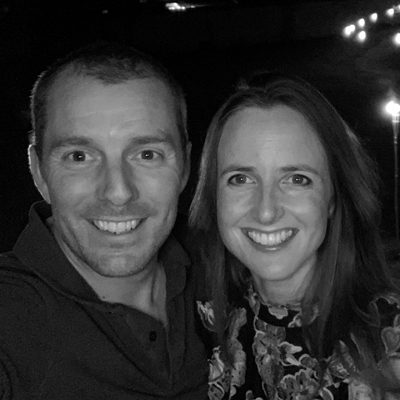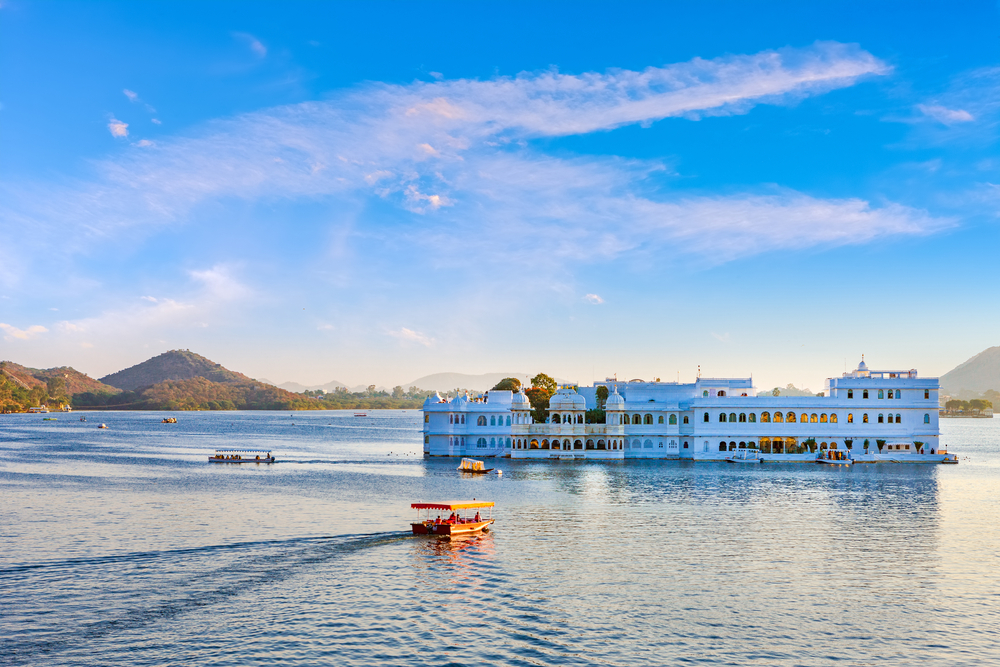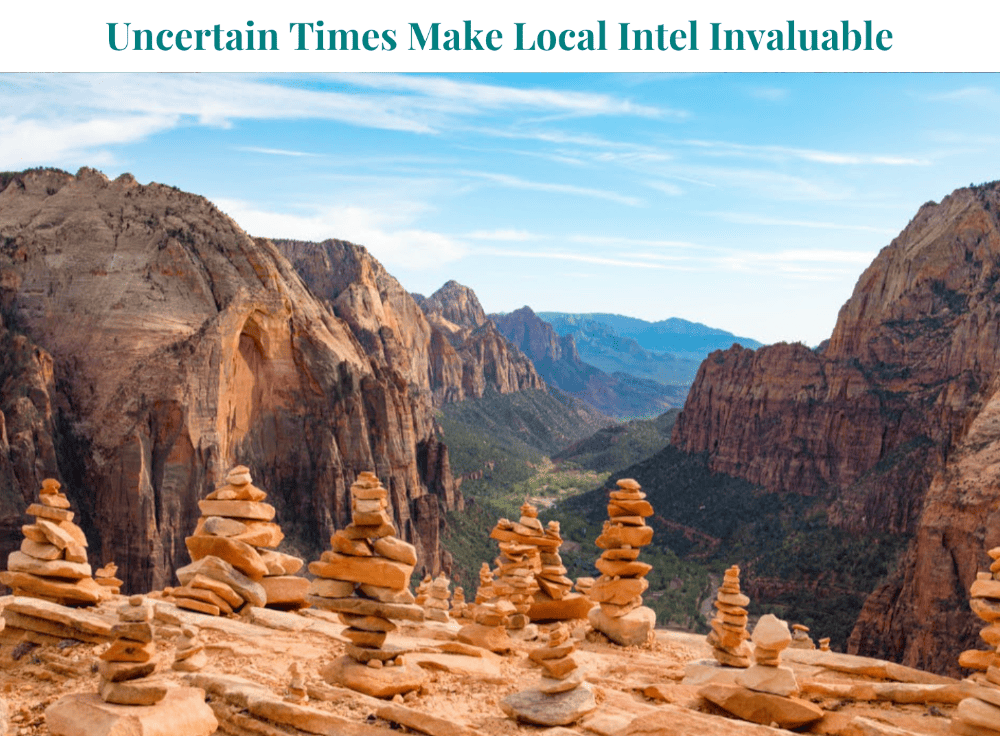Unlocking Mumbai: Insider’s Travel Guide
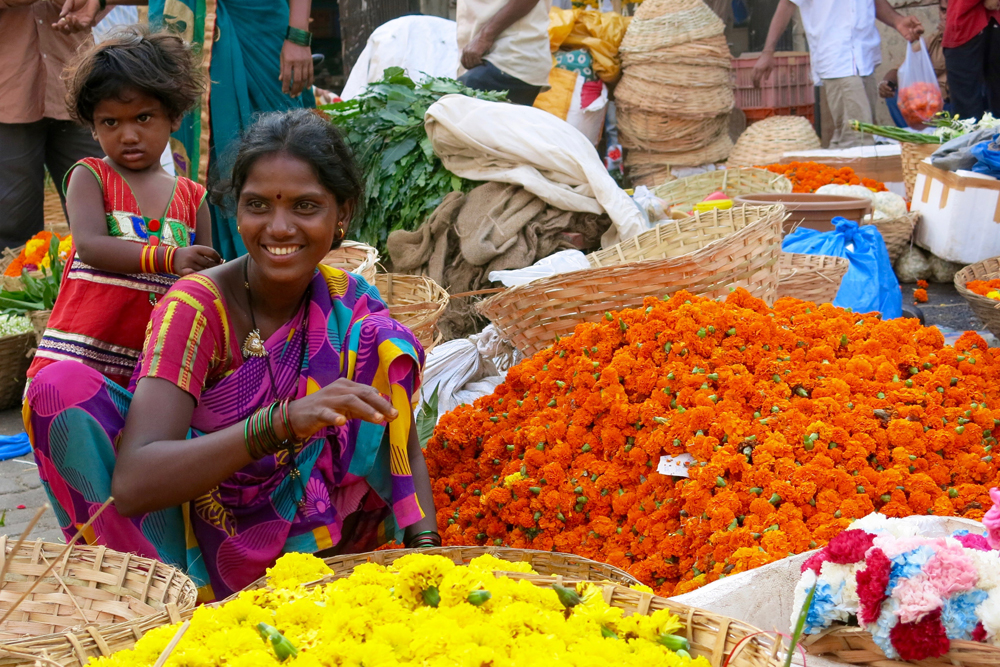 To learn which of Mumbai's many markets you shouldn't miss, read on. Photo: India Beat
To learn which of Mumbai's many markets you shouldn't miss, read on. Photo: India Beat
The insider advice on this page is from two of Wendy’s Trusted Travel Experts for India: Bertie and Victoria Dyer.
Bertie Dyer fell in love with India at age 12 and has spent as much time as possible there since. He and his wife, Victoria, lived for ten years in Jaipur, where they were married and had their first child. The company they started together, which arranges private journeys to India, grew out of their desire to introduce visiting friends to the people and places they love in Rajasthan, and today they specialize in unique trips tailored to individual interests—a type of travel experience that is rare in India, where most tours emphasize ticking off as many main sites as possible. Bertie’s areas of expertise include Moghul architecture, wildlife photography, and Indian history. Victoria’s passions include yoga, Indian cooking, and textile design—and her knowledge of boutiques and bazaars has made her Jaipur shop crawl one of their most popular tours. Bertie and Victoria split their time between their home in India and the U.K. Their Jaipur office is run by a dedicated team of local employees who have been with the company from the beginning.
Where to Stay
Best bang-for-your-buck hotel
Overlooking the Gateway of India and the Arabian Sea, the Taj Mahal Palace is a Mumbai institution. (Don’t miss the views from the hotel’s Harbour Bar, Mumbai’s first licensed drinking establishment.) The Tower rooms are smaller and decorated more simply, but rates can be half that of the Palace wing, which has been refurbished to retain its 1950s/60s heritage feel; Bertie and Victoria’s travelers receive upgrades when available.
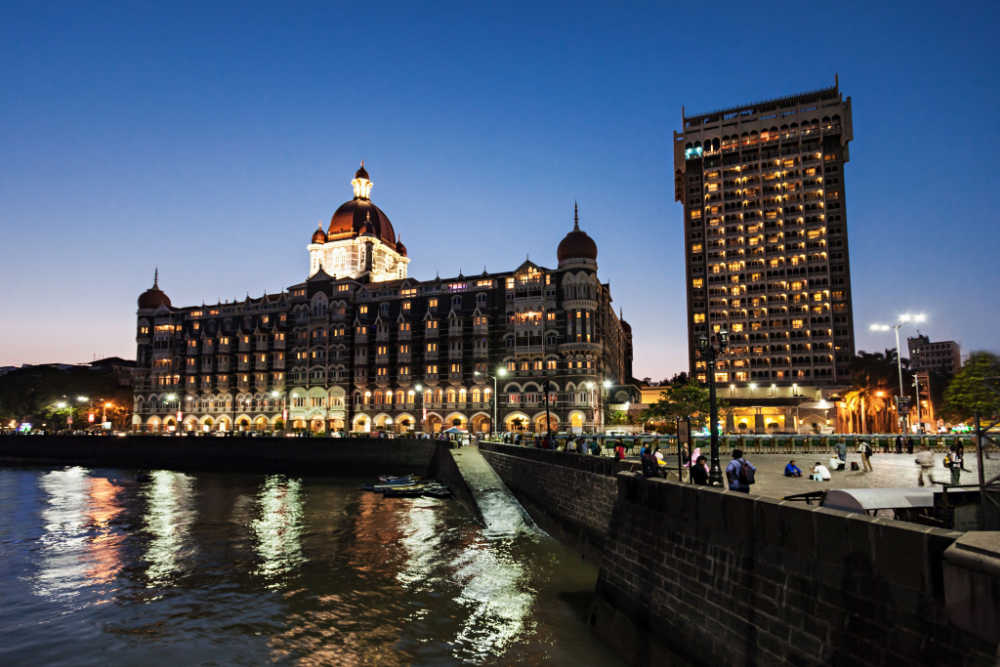
The Taj Mahal Palace hotel has rooms in both an older Palace wing and a newer tower.
Where to Eat and Drink
Restaurants the locals love
Mumbai is famous for its seafood, and Trishna is the place to try the vast array of fresh seafood hauled onto the docks just down the road. Try the butter garlic crab served with roomali roti, a very thin bread.
Bombay Canteen is modern, funky, and fun. Order the tandoori pork, which is slow-cooked twice and comes with a glaze of spicy jaggery (a South Asian sugar), topped off with pickled cucumber and onion carrot slaw.
When you want a break from spices and curry, head to The Table for delicious garlic and truffle fries and other Western dishes.
Britannia & Co. is a vintage classic built in the early 1920s by George Wittet, the architect who designed the Gateway of India. Go for the traditional Parsi cuisine and old-world cafeteria vibe.
Dishes to try
Vada pav is Mumbai’s signature street food: a spicy potato deep-fried and then served in a soft bread roll.
Bombay duck. Confusingly, this is not actually duck, but a scary looking fish, best eaten fried. Trishna (see above) does a particularly good version.
Meals worth the splurge
Ziya, the flagship restaurant at the Oberoi Nariman Point hotel. Famed for his revolutionary Indian cuisine, executive chef Vineet Bhatia was the first Indian chef to be awarded a Michelin star (he now has two). The restaurant overlooks Marine Drive, and a table by the window gives you the best views of the bay. If you’re going all out, order the Ziya Gourmand Vault Menu, an exquisite seven-course tasting menu.
For a true gastronomic journey, splurge on the ten-course tasting menu at Masque. Using locally sourced ingredients and preparing them with international techniques, the team at Masque blends flavors in ways you’ve never imagined. The seasonal menu changes every few months.
Pit stops
Read Gregory David Roberts’ bestselling novel Shantaram (or watch the Apple TV+ series), and then head to the brilliantly featured Leopold Café. Leopold has a buzzy, vibrant atmosphere and is a fun place to take in the local Colaba scene.
For the young at heart, the hip-and-happening suburb of Lower Parel is home to great bars and restaurants (including Bombay Canteen, a favorite of Victoria and Bertie’s) and fabulous shopping. Don’t miss the Good Earth home-goods store and café either.
Things to See and Do
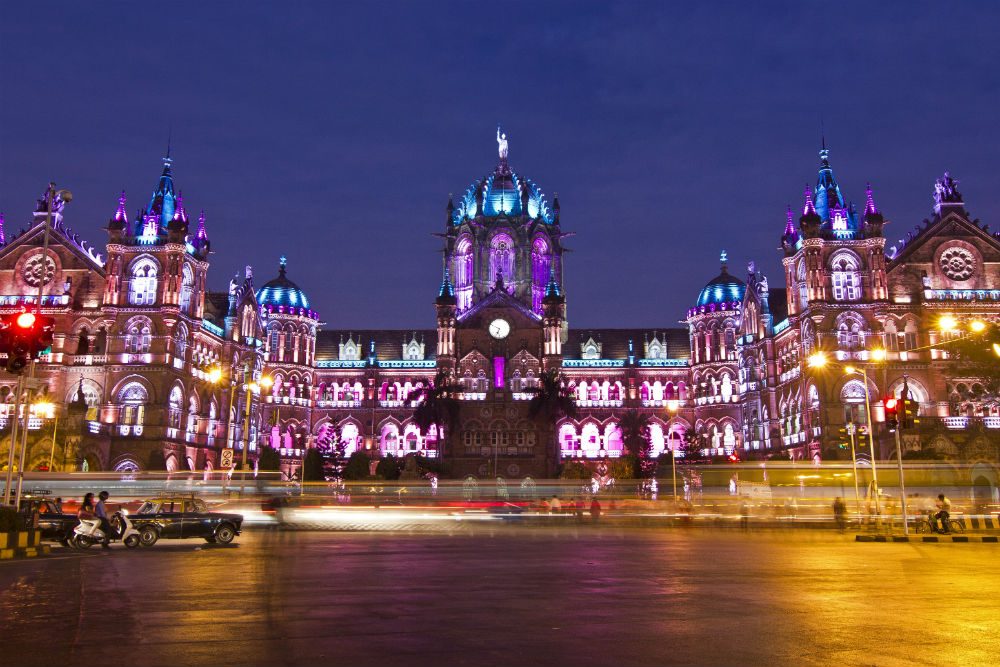
One of Mumbai’s most underrated spots is inside the Chhatrapati Shivaji Maharaj Terminus. Photo: India Beat
Most underrated place
The Great Indian Peninsular Museum, inside the Chhatrapati Shivaji Maharaj Terminus (formerly known as the Victoria Terminus Railway Station), tells the story of India’s vast railway network and gives you behind-the-scenes access to this extraordinary building, renowned for its combination of Gothic and Indian architecture. In addition to visiting the private administrative areas, you’ll also get to enjoy a great viewpoint overlooking the platforms.
Most overrated place
The Hanging Gardens (also known as Ferozeshah Metha) are not worth the effort to get there, and you can have better views of the city from one of Mumbai’s rooftop bars.
Don’t miss
Make the most of being in the cricket capital of India and head to Wankhede Stadium, the home ground of the Mumbai cricket team, to watch regularly hosted one-day internationals and test matches.
If glitz and glamour are more to your taste, head to the flagship store of Sabyasachi. Sabyasachi Mukherjee is a Kolkata-based designer who changed the face of Indian fashion. The Mumbai store is housed in a neoclassical building, originally built for a British bank, that now features over 150 works of art, 100 chandeliers, 275 carpets, 3,000 books, a tearoom, and some of the most dazzling saris and lehengas you will ever see. For jewels to complement these outfits (or some of your own), check out The Gem Palace Boutique, which brings Jaipur’s legendary Gem Palace jewels to Colaba.
Colaba’s art galleries showcase the dynamic and evolving nature of Indian art. From heritage spaces such as NGMA and the Jahangir Art Gallery to experimental and contemporary galleries such as Chatterjee & Lal and Project 88, Colaba is a must-visit for those interested in modern and avant-garde art forms.
Top tours
Mumbai is a living museum of architectural history. With a skyline that speaks to colonial grandeur, Art Deco elegance, and Indo-Saracenic splendor, the city is a captivating blend of old and new. Explore the mix of Gothic Revival, Victorian, Art Deco, and contemporary design on a specialist-guided architectural walk.
A lesser known but fascinating aspect of Mumbai is its vibrant Jewish heritage. The Jewish community has been an integral part of Mumbai’s social and cultural fabric for centuries, bestowing a rich legacy of synagogues and traditions that continue to thrive today. On Victoria and Bertie’s Jewish heritage guided walk, you’ll discover hidden synagogues, learn the stories of Jewish merchants and industrialists, and view the architectural gems they left behind.
Bertie and Victoria love to shop! Their highly curated shopping crawl of Mumbai takes you to the city’s most beautiful jewelry and fashion stores, antiques shops, and into the must-see bazaars and markets. One of their favorites is the famous Thief’s Market—chor in Hindi means thief. It is said that this market was originally called Shor Bazaar (meaning noisy market), however it was mispronounced by the British as Chor Bazaar, a name later vindicated as illegal and stolen goods found their way into the market. This bazaar is located in a Muslim area (so dress conservatively) and is a bustling hive of shopping activity—though today, goods tend to be second-hand rather than stolen.
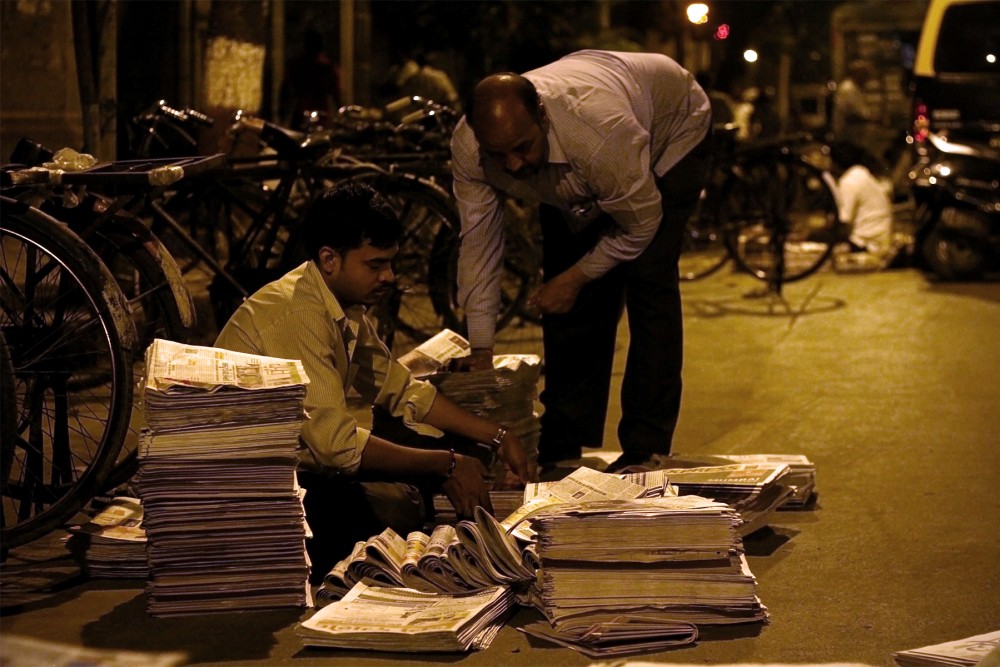
Early-morning activities in Mumbai. Photo: India Beat
Tour Mumbai at dawn. Seeing this lively city wake up provides you with an understanding of the real Mumbai, one that goes beyond the glamour and skyscrapers of the Colaba district. Go to the Sassoon Docks to watch the fishing boats come in, then to the auction where the early-morning catch is sold. Afterward, you can watch the newspaper sorting that takes place on the streets before heading to the vegetable and flower bazaars; you will start to understand the logistics of the city’s food distribution as 100 tons of meat, fruit, and vegetables enter the various markets. When you walk the same lanes just a few hours later, you won’t find any evidence of the morning’s activities.
Diggi Rathore works alongside Bertie and Victoria and knows Mumbai like no other. Charming, fun, and an excellent Bollywood dancer, Diggi’s passion for life is contagious and he will quickly absorb you into the local scene. This could be at the Royal Western Indian Turf Club to watch horse racing (the Indian Derby is one of the most glamorous events in the Indian calendar), at Bademiya (his favorite food stall), or for drinks at Social in Colaba.
Hidden gem
The Dr. Bhau Daji Lad Museum, Mumbai’s oldest, is dedicated to the city’s decorative and industrial arts. The ornate Victorian building is a fine example of colonial-era architecture and was originally intended to act as the Indian version of London’s Victoria and Albert Museum.
Cheap thrill
Explore Worli Village and Mumbai’s spice market. Worli is home to the Kohli community, the original inhabitants of the Mumbai area. Today they are still fishermen, and this traditional village feels like it’s a million miles away from the city—even though it’s right in the center of Mumbai’s skyscrapers. Visit the fish market and walk up to the Worli Fort before heading over to the spice market, about 20 minutes away, where it’s fascinating to see the pounding machines and the local ladies instructing the vendors on their preferred blend.
How to spend a lazy Sunday
Sunday is the best day to walk in the city, as it’s the quietest. Start in Colaba at the Gateway of India: Have brunch at the Taj Mahal Palace before walking up Chattrapati Shivaji Road to catch a movie at the art deco Regal Cinema. Alternatively, check out the National Gallery of Modern Art or the Chhatrapati Shivaji Maharaj Vastu Sangrahalaya Museum, further up on Mahatma Gandhi Road. Heading north from either the cinema or the museums, you will see several more of Mumbai’s architectural gems before reaching the Oval Maidan gardens, where locals gather to play cricket on Sundays.
You might also head to Juhu, a neighborhood that combines luxury, culture, and a dash of Bollywood glamour. Start with a peaceful walk along sandy Juhu Beach before heading to the Sea Lounge at the Taj Lands End for coffee and pastries and stunning sea views. Then visit ISKCON, a magnificent temple complex and spiritual oasis. Enjoy a long lunch at the Olive Bar and Kitchen. In the afternoon, explore the vibrant arts scene by catching a performance or simply soaking in the atmosphere at the intimate and artsy Prithvi Theatre. Revive with coffee and a light snack in the shade of a tree at the charming Prithvi Café. Later, explore the area’s high-end boutiques (Victoria likes Nicobar for contemporary Indian fashion and Fizzy Goblet for handcrafted designer footwear). End your day with sundowners at AER Lounge in the Four Seasons hotel; this rooftop bar offers breathtaking views of Mumbai’s skyline and the Arabian Sea. Sip on a craft cocktail and soak up the gorgeous sunset.
Best Time to Go
October to March. During the Kala Ghoda Arts Festival, held every February, the city is packed with events, exhibitions, and huge art installations.
Worst Time to Go
June to September is the monsoon season. The city sometimes flood, making it impossible to get anywhere, and the rain can be so heavy that it’s like standing under a shower.
Biggest Rookie Mistakes
Trying to fight the traffic; plan carefully to avoid it altogether if possible. For example, if you arrive in Mumbai during rush hour, break up the journey to your hotel by stopping en-route for a tour of Dharavi, a former fishing village that is now one of Asia’s largest slums; in spite of the inevitable dirt and apparent chaos, Dharavi is the most bustling part of Mumbai, and a prime contributor to the city’s GDP. While the word “slum” describes a place of poverty and hardship, it is also used to describe a place of enterprise, humor, and nonstop activity. Bertie and Victoria’s travelers visit the commercial areas of the slum—not the residential ones—so you will see factories, workshops, tanneries, recycling centers, and even a showroom where you can purchase leather goods.
Not making arrangements for private guides ahead of time: Because of the cruise ships that dock at Mumbai from October to April, there is high demand for guides on certain days.
Scam to Avoid
Taxis at the airport are notorious for trying to take tourists for a ride; only get in a car that you have pre-booked.
Bragging Rights
Bertie and Victoria can arrange a visit to Mr. Alim, a revered movie-poster artist, who will create an original Bollywood-style poster featuring you as the star.
Prime Picnic Spot
Join the throngs of walkers on Chowpatty Beach for an evening stroll, picking up some street-food snacks along the way. It’s the perfect place for people-watching.
The Souvenirs
Head to the Mutton Street market for vintage Bollywood posters and ship-related antiques—portholes from cruise liners, polished brass handles from luxury yachts, old maps, and more.
Can't-Miss Photo Ops
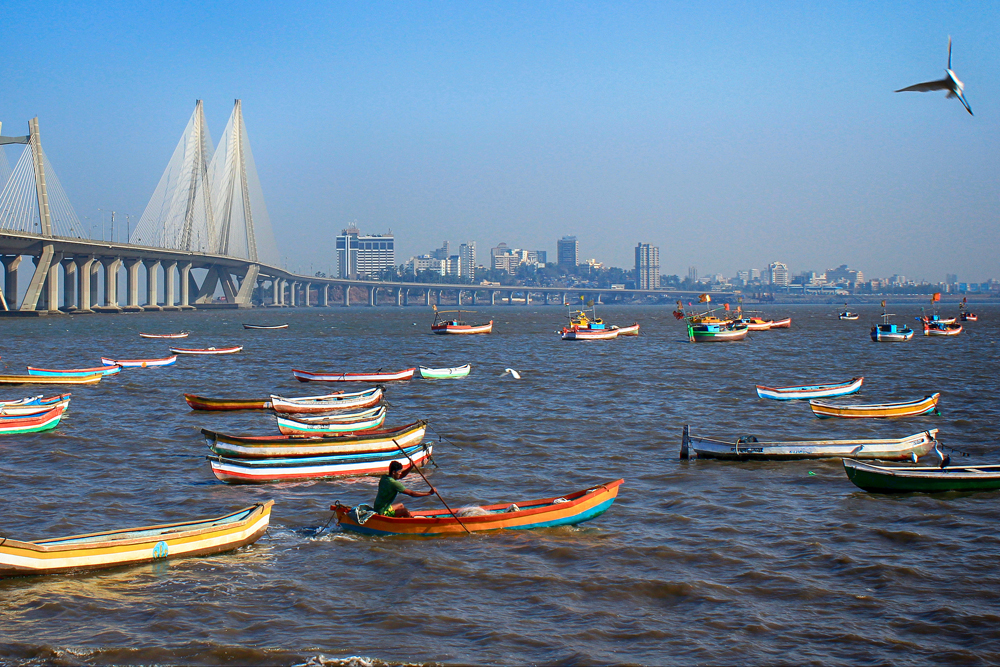
The view of the city from Worli Fort, an incredible panorama encompassing the Bandra-Worli Bridge, the skyscrapers of downtown Mumbai, and the traditional fishing village of Worli.
The view from the terrace of the Chhatrapati Shivaji Terminus. Get some great shots of this iconic building and shoot a time-lapse video of the crazy traffic below! The terrace is only accessible between 3 p.m. and 5 p.m. on weekdays with a ticket to the museum (see “Most underrated place”).
Airport Intel
Check out the amazing art installation in Terminal 2; it’s truly museum-quality, with more than 7,000 pieces of artwork and artifacts from all over India.
Tipping Tip
Ten percent is standard at restaurants; more and more places are now including a service charge on the bill—in which case you don’t have to add a tip—so be sure to check.
Don't Forget to Pack
Don’t wear sandals or open-toed shoes, particularly when visiting the markets—the streets are occasionally less than immaculate!

